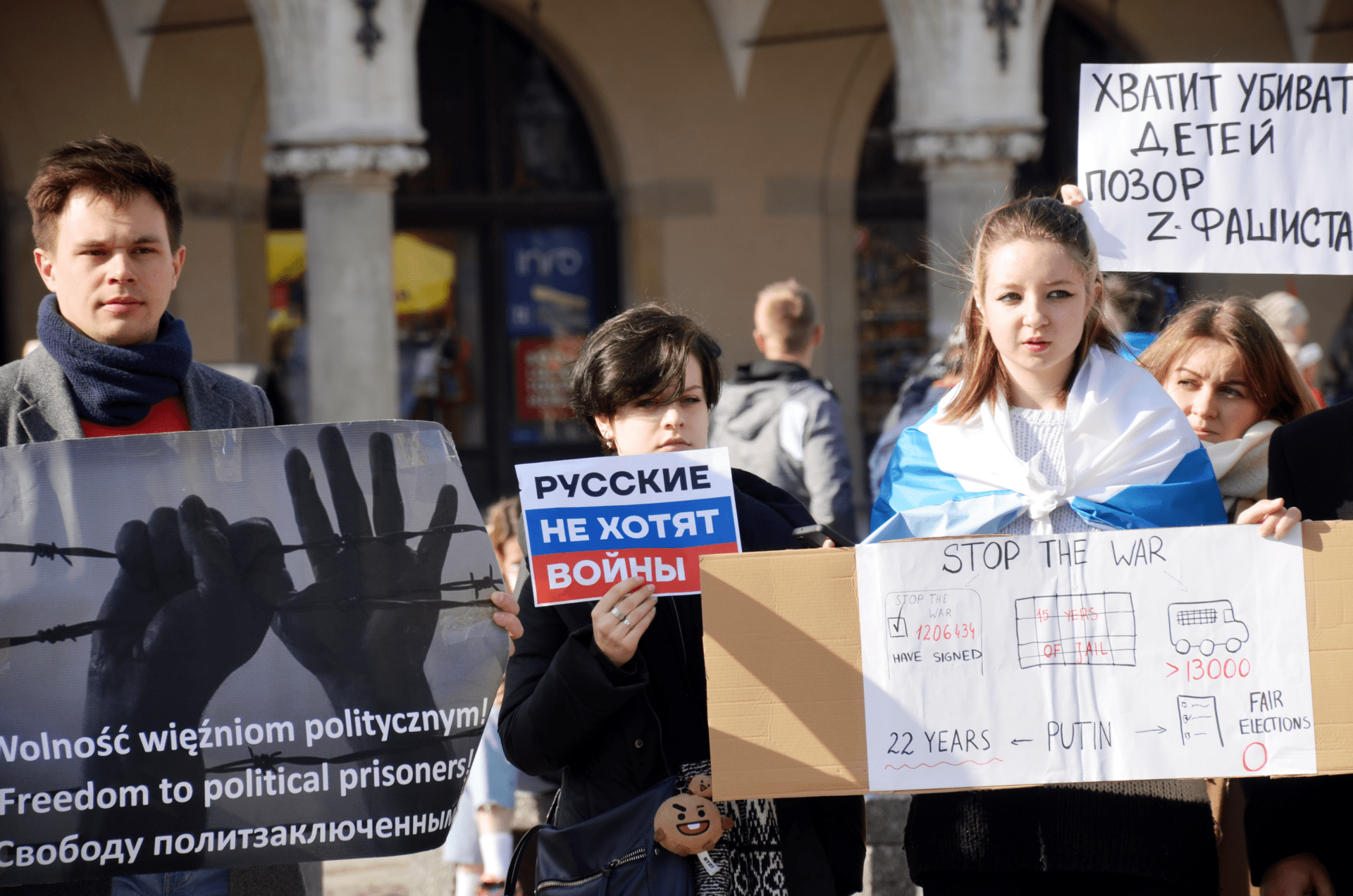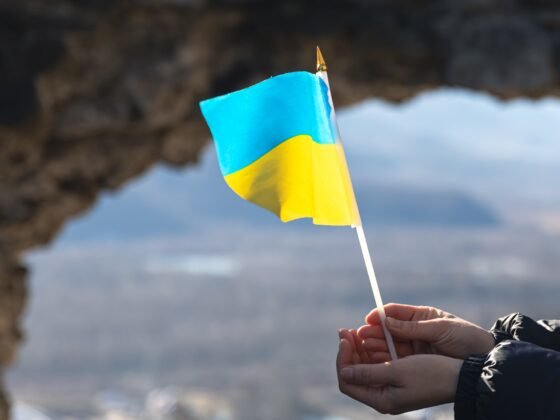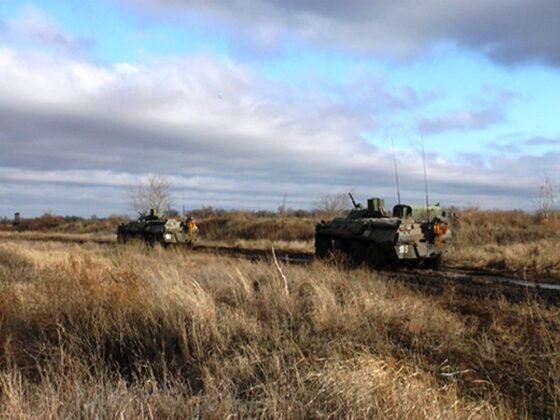What does it mean when a social movement that opposes government policies or the regime itself must physically relocate to continue its advocacy? What happens when movement participants flee their homes to another country due to repression or the threat of repression? This “movement” of movements has been underway—in a partial, fragmented, and disorganized fashion—since Russia’s invasion of Ukraine in February 2022. Even as attention rightly focuses on assisting displaced Ukrainians at home and abroad, the unprecedented exodus of activists from Russia raises a host of issues for Russian social movements and those who support their diverse aims.
In past research, we identified several broad trends in Russian civil society prior to the war, which we labeled enduring, evaporating, and adapting forms of activism. These terms captured, respectively, organizational types that had persisted since the 1990s, those unable to survive and those that adapted to Russia’s increasingly repressive environment. Here we examine a new trend in Russian civil society: escaping. Specifically, we consider how the departure of so many social movement activists from Russia over the past year affects projects that may require cooperation with citizens at home. We focus on examples from feminist and environmental activism, and efforts opposing Russia’s war on Ukraine.
Russian Movements on the Move: Fleeing Repression
Russia’s assault on Ukraine in February 2022 was accompanied by the further shrinkage of public space for political activism. New laws increased the penalties for anti-war protest, and between February and December 2022, more than 20,000 people were arrested for political reasons. The Russian government also stepped up its identification of so-called “foreign agents.” In July 2022, one of the original criteria—receiving foreign funding—was reduced to a vague implication of being under foreign “influence.”
The escalation in repression and the danger of mobilization pushed hundreds of thousands of Russians to depart for other countries. A year after the war began, estimates of the number of Russians who had left ranged from 500,000 to almost four million, many taking up residence in nearby Georgia, Armenia, Latvia, Kazakhstan, and Kyrgyzstan. Some of those who left soon after the invasion were civic activists, although many activists also remained in Russia for reasons ranging from family obligations and economic constraints to moral conviction.
In theory, activists abroad should enjoy a host of new opportunities like freedom of speech and assembly in a more democratic political context. While the Russian regime perhaps considers the exit of activists to be a “safety valve” (releasing oppositionists to a location where they will cause the regime less harm), it may instead constitute a new opportunity for Russians to exercise “voice” and influence both in their new location and, indirectly, back at home in Russia. However, the exodus also means that activist networks have been disrupted, many experience personal and professional dislocation, and conflicts may arise between activists who left and their counterparts in Russia. Moreover, leaving is not a guarantee that activists will successfully avoid repression. But thus far, the Kremlin’s violent repression of dissidents abroad has been limited.
Dilemmas of Activism Abroad
The departure of so many active and engaged citizens creates challenges for networks of activists who want to promote change inside Russia. The war has not dampened concerns about pressing social issues. For example, a Levada Center poll in September 2022 showed that vast majorities of the population continue to regard environmental issues and domestic violence as serious problems. Whether the change activists seek is issue-based or explicitly anti-war, the challenges of communicating and coordinating movement efforts transnationally are immense.
Our goal in analyzing these challenges is to help policymakers and those who support activists see them more clearly and respond to them more directly. Research on social movements has demonstrated that there are several factors that shape (but do not determine) activists’ ability to sustain themselves and achieve their goals. These include:
- solving leadership challenges in a more fragmented movement;
- articulating a narrative about the cause that attracts support from multiple audiences;
- working transnationally to increase leverage on the target of activism—in this case, the Russian government;
- coordinating digital and non-digital tactics; and
- acquiring a resource base to support activism.
The current situation is dynamic, and the context for escapees constantly changes. Activists—especially those who have persisted in their work despite the hostile context of Russia’s political system since 2012—are often dedicated, persistent, creative, and adaptive. They are experimenting with strategies to address these challenges in real-time. We review some of these challenges and activists’ efforts to address them in the sections below.
Who Leads? Who Speaks? Dilemmas of Legitimacy, Narrative, and Audience
When some activists are in exile, who leads, and who speaks for “the movement”? How can people abroad speak with legitimacy and influence society? If it’s not safe for people inside Russia to speak, does it protect them when activists speak from abroad, or are those in Russia still implicated?
One way to address this dilemma is to avoid hierarchical organization and use a networked approach to activism. The Feminist Antiwar Resistance (FAR), for instance, is a network of cells across regional and international lines. Anyone can speak as FAR, and cells can even take somewhat divergent policy positions, but they moderate their Telegram channel and remove traceable metadata of protest art and other activist actions. But an organization’s nonhierarchical network does not entirely protect activists who remain in Russia. When FAR was labeled as a foreign agent in December 2022, three of its activists were singled out for inclusion on the registry, yet that does not mean that the networks’ other activists are not at risk.
For movements that have activists both in Russia and abroad, how does the movement explain itself and its goals to multiple audiences? Who is the primary audience for activism organized from abroad? Generally, the audience for social movement activism is both domestic and international. In the typical transnational social movement model, activists in a repressive context can call upon allies in other, more democratic contexts to pressure their governments to, in turn, press the target state to cease its human rights violations or other violent behavior. Keck and Sikkink referred to this as the “boomerang” model and noted that such international advocacy was most effective when there was also a strong movement within the target country. In the Russian case, however, the degree of repression is such that domestic activist movements (especially those that overtly oppose regime policy or that are regarded as ideological threats by the regime) are not strong—and the allies outside of Russia who are trying to amplify Russian activists’ messages may themselves be Russian exiles.
As movement actors disperse beyond Russia, activists need to rebuild networks and create new coalitions. It may be harder to build social capital when some movement participants are in Russia, and others are not. Activists who have remained are under intense pressure. Although people who have left may be physically safer, they are often in precarious financial and professional positions. Can such grounds for potential rifts between “escapers” and “remainers” be overcome by building new transnational networks? New coalitions are emerging. The Ukraine War Environmental Consequences Work Group (UWEC), for instance, is a transnational collaboration (Ukrainian, Russian, Belarusian, and American) developed to monitor the environmental effects of Russia’s war. It brings together scientists, journalists, and activists with a wide range of expertise on topics ranging from greenhouse gas emissions to biodiversity loss. Such transnational collaborative experiments may be fruitful, but activists may find they need to manage new dilemmas of leadership and legitimacy that they had not anticipated.
Who Acts? The Dilemma of Tactics that Bridge the Digital Divide
Long-distance activism (such as networked activism that includes people inside and outside Russia) is often digital—which has many advantages, as it enables cooperation and lowers risks. But what are the challenges of connecting digital and non-digital activism? Activists in Russia are at risk if they undertake in-person, public actions in a way that those abroad are not, and may be at risk even if they engage in digital activism in a way that is not anonymous.
Some activist organizations straddle the digital/non-digital divide. FAR, for instance, publishes a print-it-yourself newspaper called Women’s Truth (Zhenskaia pravda), which people can distribute anonymously in physical spaces in Russia (or share on social media or by email). This tactic aims to break through Russian state propaganda and help spread accurate information about the war beyond the “activism bubble.” Likewise, the Russian Socioecological Union, a network of environmental activists with members inside Russia and abroad, monitors pressure on environmentalists in Russia, publicizing their plight to a broader audience. Some environmentalists also created the Ecological Crisis Group to provide legal support to activists who remain under pressure in Russia and to offer practical advice on their Telegram channel for activists under threat.
Who Funds? Resource Dilemmas
Since 2012, the Russian government has used both carrots and sticks to shape resource flows to Russian activists to encourage certain forms of mobilization and discourage others. The “sticks” include the various iterations of Russia’s foreign agent laws and the law on “undesirable” organizations, while presidential grants and other state funding for socially oriented NGOs constitute the “carrots.”
Donor-recipient relations in Russia have been profoundly disrupted since the initial foreign agent laws were put in place. Because several of the major foundations that had funded Russian civil society in the 1990s turned their attention elsewhere once the 21st century began, many activists grew accustomed to working without significant foreign financing, giving up the idea of having dedicated office space, and relying on volunteer labor rather than grant-funded positions. Although some activist groups continued to have ties to international donor-partners, by the time the war began in 2022, the trend away from “NGO-ization” in Russia was in full swing.
Activism, however, still requires resources. Ironically, some activists accused of being “foreign agents” while in Russia now may find themselves based in countries viewed with suspicion by the Russian government. Given that the fear of the pejorative label “foreign agent” is no longer relevant, could activists’ displacement be used to their advantage? Perhaps the outflow of activists will create a new opportunity to build connections between foreign donors and Russian recipients. If so, might that funding inadvertently recreate some of the same challenges for Russian civil society (e.g., competition for scarce resources preventing possible collaboration) that Russian activists faced in the 1990s?
In the interim, Russian activist networks like FAR are collaborating with other groups to raise funds to help support activists who lose their jobs in Russia due to their opposition to the war. Some organizations help Russian activists escape the country or help Ukrainians forcibly displaced to Russia to leave for other states. Such networks include activists in Russia as well as outside of it. Solidarus, a Berlin-based organization staffed in part by Russian activists who emigrated prior to the war, offers support to those who left more recently and monitors the legal situation for activists in Russia and for those seeking asylum in the EU. These collaborative activities are likely building the grassroots connections that serve as a foundation for civil society and that were not built in the 1990s.
Conclusion: The Civil Society of the Future?
Hypothetically, participating in activism (whether abroad, at home, or mixed) could help build “social capital”—a crucial element of civil society and democracy in the long run. State repression like that imposed by Russia over the past decade makes it more challenging to support activists from abroad—hence the “adapting” activists had essentially stopped looking for foreign funding even well before the invasion. “Escaping” activists, however, could perhaps be more easily funded, as international supporters who endorse the goals of these activists no longer need worry as much about activists being harmed by “foreign agent” labels or ”undesirable organization” laws. Is it possible to seize this opportunity to build transnational connections and keep the pro-democracy, human rights, and anti-colonial sectors of Russian civil society active?
Yet the strategy of funding Russian activists in exile would not be risk-free. It is crucial to support Ukrainian civil society and not to see activists of the region as competitors for the same “pie.” One important issue for funders of civil society is to recognize that Russia has for too long been the center of attention and that helping Russian activists must not be seen as part of a zero-sum strategy.
Funding Russian activists may also carry risks for the very civil society-building that funders hope to foster. Rifts between those in exile and those who have remained in Russia could become a significant fracture, similar to divisions that arose among foreign-funded Russian civil society groups in the 1990s (and between those groups and activists and the ones who did not get foreign funds).
To attenuate the risk, could donor support be directed toward activists-in-exile who are able to demonstrate continued participation in networks that extend into Russia and who have projects that support Russian activists at home? The latter, in effect, would become intermediaries—an indirect way to fund what remains of domestic Russian civil society.
Laura A. Henry is Professor of Government and Acting Chair of the Russian Department at Bowdoin College.
Valerie Sperling is Professor of Political Science at Clark University
Lisa McIntosh Sundstrom is Professor of Political Science at the University of British Columbia.











